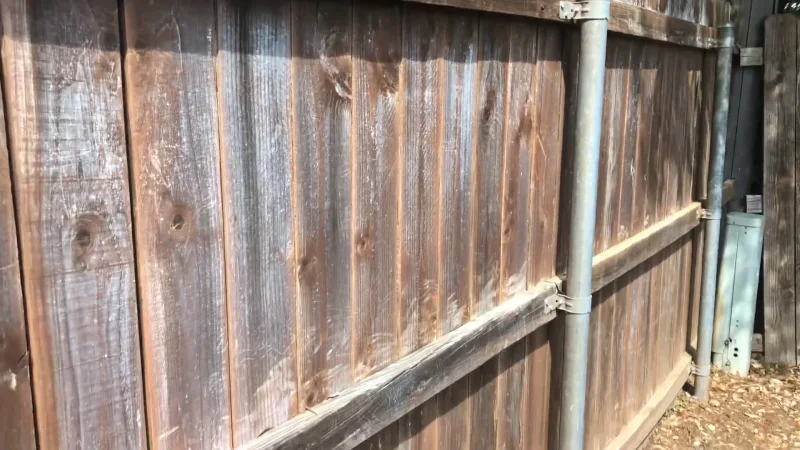Benefits of Mixing Cedar and Pressure Treated Wood [Mix Properly]

Mixing cedar and pressure treated wood is a common choice for outdoor projects such as decks, fences, and furniture. Cedar is a popular choice for these types of projects due to its natural beauty and resistance to rot and insects.
Pressure treated wood, on the other hand, is treated with chemical preservatives to protect it from rot and insects, making it a more durable choice for structural elements. Combining the two woods can provide a combination of the natural beauty of cedar with the durability and structural stability of pressure treated wood.
However, it is important to consider the compatibility of the different types of wood and the potential for adverse reactions between them. In this article, we will explore the benefits and considerations of mixing cedar and pressure treated wood for outdoor projects.
You'll Learn About
Mixing Cedar and Pressure Treated Wood
It is possible to mix cedar and pressure treated wood when building a deck or other outdoor structure. Cedar is a popular choice for decking and railing materials due to its natural beauty and resistance to rot and insects. However, it is not as structurally stable as some other types of wood, such as southern yellow pine, which is often used for the posts and joists of a deck.
Treated With Chemical Preservatives
Pressure treated wood is treated with chemical preservatives to protect it from rot and insects, making it a more durable choice for the structural elements of a deck. While it is not recommended to use pressure treated wood for the visible portion of the deck, such as the decking boards or railings, it is acceptable to use it for the hidden structural elements, such as the posts and joists.
Natural Beauty of Cedar With the Durability
Mixing cedar and pressure treated wood can provide a combination of the natural beauty of cedar with the durability and structural stability of pressure treated wood. However, it is important to make sure that the different types of wood are compatible and do not cause any adverse reactions when in contact with each other. It is also important to follow proper installation and maintenance practices to ensure the longevity of the deck.
Benefits of Mixing Cedar and Pressure Treated Wood
Natural Beauty and Durability
One of the main benefits of mixing cedar and pressure treated wood for outdoor projects is the combination of natural beauty and durability. Cedar has a natural beauty that is unmatched by other types of wood, making it a popular choice for decks, fences, and outdoor furniture.
However, cedar is not as structurally stable as some other types of wood, such as southern yellow pine, which is often used for the posts and joists of a deck. By combining cedar with pressure treated wood for the structural elements, you can enjoy the natural beauty of cedar while also ensuring the stability and durability of the project.
Potential Cost Savings
Another benefit of mixing cedar and pressure treated wood is the potential cost savings. Cedar can be more expensive than other types of wood, particularly when used for the entire deck. By using pressure treated wood for the structural elements and cedar for the visible portion of the deck, such as the decking boards or railings, you can save money while still achieving the desired aesthetic.
Moderate Structural Stability
In addition to these benefits, the structural stability of pressure treated wood is another advantage of mixing the two woods. As mentioned, pressure treated wood is treated with chemical preservatives to protect it from rot and insects, making it a more durable choice for the structural elements of a deck. This added stability can help to ensure the long-term performance and safety of the project.
Considerations When Mixing Cedar and Pressure Treated Wood
While mixing cedar and pressure treated wood can provide a combination of natural beauty and durability for outdoor projects, there are a few considerations to keep in mind. One of the main considerations is the compatibility of the different types of wood.
Compatible and Do Not Cause Any Adverse Reactions
It is important to make sure that the cedar and pressure treated wood are compatible and do not cause any adverse reactions when in contact with each other. This can be particularly important for the structural elements, such as the posts and joists, which are in contact with the visible portion of the deck made of cedar. High and low pressure can cause uneven effect.
Potential for Adverse Reactions
Another consideration when mixing cedar and pressure treated wood is the potential for adverse reactions between the woods. Some types of wood can release chemicals that can affect the color or finish of other types of wood, particularly when they are in contact with each other. It is important to research the compatibility of the different types of wood and choose a finish that is compatible with both types of wood.
Proper Installation and Maintenance is
Proper installation and maintenance is also crucial when mixing cedar and pressure treated wood. It is important to follow proper installation guidelines and use the correct fasteners and hardware to ensure the stability and longevity of the project. Regular maintenance, such as cleaning and sealing the wood, can also help to protect the wood and extend its lifespan.
Examples of Mixing Cedar and Pressure Treated Wood in Outdoor Projects
There are many examples of mixing cedar and pressure treated wood in outdoor projects, including:
Decking and Railing
A common use of mixing cedar and pressure treated wood is in the construction of a deck. Pressure treated wood is often used for the structural elements, such as the posts and joists, while cedar is used for the visible portion of the deck, such as the decking boards or railings. This combination provides the natural beauty of cedar with the durability and stability of pressure treated wood.
Fences
Mixing cedar and pressure treated wood can also be a good option for fences. Pressure treated wood can be used for the posts and framing, while cedar can be used for the pickets or panels. This combination provides a durable and attractive fence that can last for many years.
Outdoor Furniture
Cedar is a popular choice for outdoor furniture due to its natural beauty and resistance to rot and insects. However, it is not as structurally stable as some other types of wood. By mixing cedar with pressure treated wood, you can create outdoor furniture that is both attractive and durable.
Pressure treated wood can be used for the frame and structural elements, while cedar can be used for the visible portions of the furniture, such as the slats or arms.
How to Mixi Cedar and Pressure Treated Wood in Outdoor Projects?
Here are a few additional tips for mixing cedar and pressure treated wood in outdoor projects:
Choose the Right Finish
It is important to choose a finish that is compatible with both cedar and pressure treated wood. Some finishes can cause discoloration or other adverse reactions with certain types of wood, so it is important to research and choose a finish that is suitable for both woods.
Use Appropriate Fasteners
Different types of wood may require different types of fasteners to ensure a secure connection. For example, cedar is a softer wood and may require special screws or nails to prevent splitting or other damage. It is important to use the correct fasteners for the specific types of wood you are using to ensure a strong and secure connection.
Consider the Moisture Content
Cedar is naturally resistant to moisture, but pressure treated wood is often treated with chemicals that can affect its moisture content. When mixing the two woods, it is important to consider the moisture content and ensure that it is consistent to prevent warping or other issues.
Follow Proper Installation and Maintenance
Proper installation and maintenance is crucial for the longevity of any outdoor project, but it is especially important when mixing cedar and pressure treated wood. Follow proper installation guidelines and use the correct fasteners and hardware, and be sure to clean and seal the wood regularly to protect it from the elements.
Conclusion
In conclusion, mixing cedar and pressure treated wood can be a good option for outdoor projects such as decks, fences, and furniture. The combination of natural beauty and durability provided by cedar and pressure treated wood can create a long-lasting and attractive outdoor space.
It is important to consider the compatibility of the different types of wood and the potential for adverse reactions between them, as well as the proper installation and maintenance of the project. We encourage readers to consider this option for their outdoor projects and provide resources for further information on the topic.




